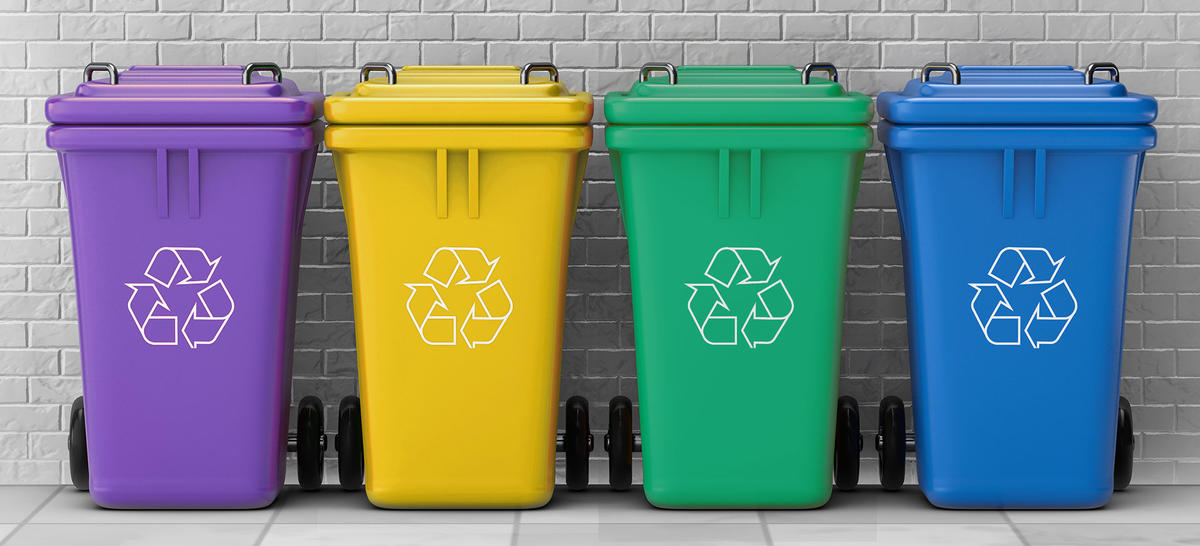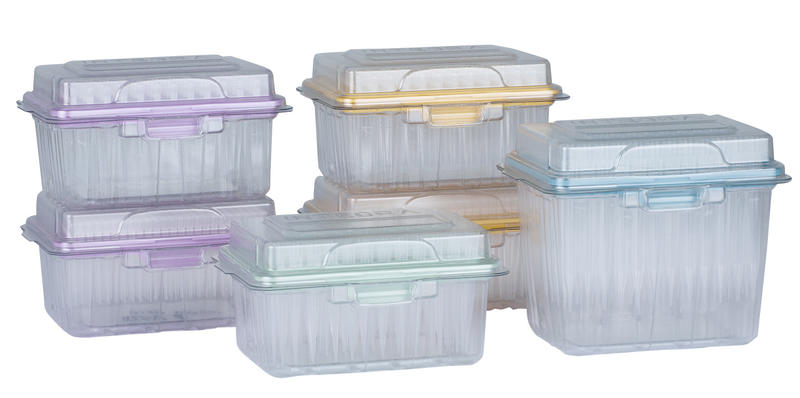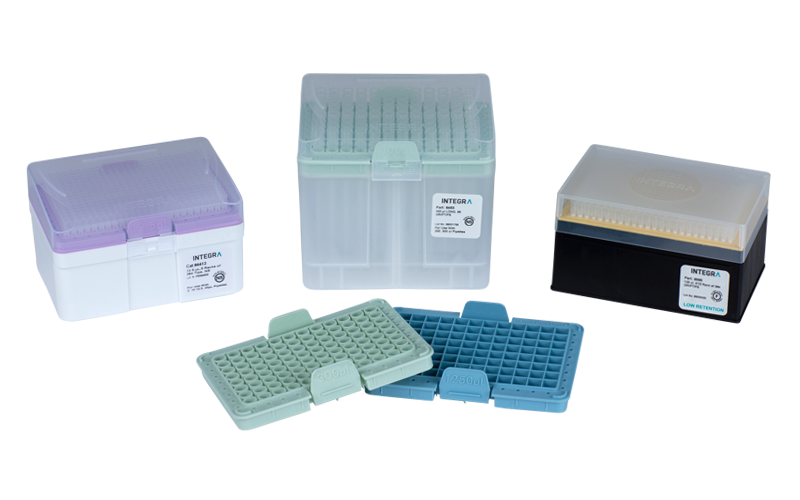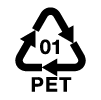
How and which INTEGRA laboratory consumables can be recycled
Our aim is to eliminating lab plastics going to landfills or disposal at sea
What to do to recycle your empty racks, inserts, and tips?
ECO Racks (PET)
Compressed ECO Racks (3xxx series) can be easily processed by your local PET recycler. The environmental benefit of PET recycling is the highest for any plastic material1, since the production of fresh PET is very energy-intensive, and little energy can be recovered during PET incineration.

Polypropylene racks (PP)
Polypropylene racks (4xxx and 6xxx series) and ECO Rack inserts can also be handled locally, provided you have the collection, sorting and recycling infrastructure within around 1000 km – any further transport negates the environmental benefit of the recyclate. If no recycling is available, energy recovery by incineration in a cement plant or waste plant is the best alternative.

Reservoirs and tips (contaminated)
Used reservoirs and tips cannot be safely recycled, due to the risk of contamination with harmful chemical or biological agents. However, that doesn’t mean there isn’t still a ‘green’ option for their disposal. Used plastics can be incinerated in energy capture plants to produce energy and to prevent landfill. The most sensible way to do this is to capture and utilize CO2 emissions (CCU) to keep carbon in the material cycle.
Which collection service is provided?
Many laboratories around the world have their own local recycling programs for racks, inserts and other lab plastic waste, as well as for energy capture incineration of contaminated tips and reservoirs.
Unfortunately, it is not practical or environmentally friendly for equipment and consumables manufacturers to provide individual collection services for large volumes of polypropylene where recycling is not available locally, but that doesn’t mean we aren’t working towards a solution. INTEGRA is now cooperating with like-minded pipette tip manufacturers with the aim of eliminating lab plastics going to landfills or disposal at sea. The first steps towards this goal took place at Spectaris Pipettes Manufacturers' Meeting in Berlin in December 2019.
What plastics are used in INTEGRA consumables?
We use three main plastics for the production of our consumables:
 |
Polypropylene (PP) |
PP is transparent, lightweight, chemically resistant and can be autoclaved. It also exhibits low binding of biomolecules, and does not contain additives that could leach into the sample. GripTips are made of virgin PP, free of DNase, RNase, endotoxins and pyrogens to ensure high quality results. PP is also used for some reservoirs, and the regrind from tip production is used to mold the standard racks. |
 |
Polyethylene terephthalate (PET) |
PET is used for ECO Racks, as it is commonly recycled and can be formed into a rigid rack using less plastic. |
 |
Polystyrene (PS) |
PS is used for our standard reservoirs, as it is crystal clear, inexpensive and ideal for aqueous solutions. |
How can they be recycled?
Regranulate and reuse
Non-hazardous plastic lab waste is collected, pressed into balls and transported to a sorting plant where the plastic is shredded, washed and sorted. The single-sort bales are then transported to a recycler, who produces regranulates – the raw material for new plastic products. Unfortunately, this process is costly, and most plastics can only be recycled once due to the changing properties of the material. These recycled materials are more brittle and are generally used for lower stress applications, such as storage boxes or garden furniture. However, we are continuously improving the recyclability of our racks according to the Design for Recycling guidelines.
1 Turner DA, Williams ID, Kemp S. Greenhouse gas emission factors for recycling of source-segregated waste materials. Elsevier 2015.























